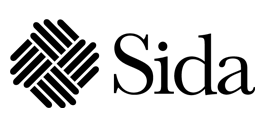Main Article Content
Effects of season and regulated photoperiod on the reproductive performance of sows
Abstract
Reproductive performance of experimental commercial Dalland sows (n = 87) maintained under a constant photoperiod (10 h light and 14 h darkness) and control sows (n = 187) maintained under natural daylight length (10.4 h light in winter and 13.4 h light in summer) were compared. In early summer 4.1% of experimental sows returned to oestrus compared to 20.8% of the control sows. In late summer 9.1% of experimental sows returned to oestrus compared to 21.9% of the control sows. Reduced photoperiod improved the farrowing rate of experimental sows in the early summer breeding compared to the control group (95.4% and 81.3%, respectively). With winter breeding there was a small proportion of sows that returned to service in both groups (7.9% and 8.9%) while the farrowing rate was high in both groups (93.9% and 91.0% in the experimental and control groups, respectively). Litter sizes derived from early summer services were 11.4 and 11.6 for the experimental and control groups, respectively, while winter services led to litter sizes of 11.6 and 12.4 whereas in late summer services, regulated photoperiod had improved the litter size of the experimental group (12.3) compared to the control group (11.2).



